Should I Encode Videos Before Youtube Uploade?
You've spent months editing and grading and finishing your love video. But now you have to upload it to social media for it to be seen by the world and you desire the all-time quality possible. I thought I'd have a look backside the scenes of YouTube's encoding and how to go the most out of information technology.
I am sometime enough that some of my early work tin can be found on YouTube at very low resolutions. This music video I cutting with Pete Doherty wandering around London was shot on 35mm blackness and white film stock and is on YouTube at a miserly 360p. It makes me want to weep.
With YouTube supporting 4K and 8K and even HDR, you want the best quality yous can when you upload and yous want to minimize the degradation that YouTube's encoding does to your video.
Recommended Specs
YouTube's recommended specs page is written with the boilerplate user in mind and can be safely ignored. There's no mention of uploading ProRes (or Cineform or DNxHR for that matter) and yet you tin and you lot should if you have the bandwidth, especially as YouTube, unlike Vimeo, has no upload quota. Doing this avoids i extra circular of H.264 encoding. Many people accept tested and shown that YouTube volition re-encode what you give it no thing what (one even testing what happens when you run it through YouTube grand times! ). So that does abroad with trying your best to make the best low bitrate H.264 encode y'all tin.
Clearly, with the volume of video that passes through YouTube (estimated at around 300-500 hours every minute!), they tin't spend the quality fourth dimension encoding our masterpiece as we would like and they have to proceed the bitrates right downwardly. A general dominion for encoding is that you become improve quality video if the software encoder takes longer (due east.k. 2 laissez passer encoding in Premiere or the tedious preset in Handbrake) or if you keep the bitrate higher. Youtube isn't neat on either of these options as it has so much video to encode that it wants to get the task washed speedily and lowering the bitrate ways less server storage space & a lower demand on the viewer's net connection. It also has to brand multiple files and so that it can dynamically switch resolution on the fly.
That said, information technology has improved vastly over the years as tin can exist seen from my quondam video from 2009 and it is possible to look behind the curtain and run across what files YouTube is making, for case with the command line tool youtube-dl .
Backside the curtain
Here is the output from youtube-dl on my old video using the -F flag to encounter the files bachelor:
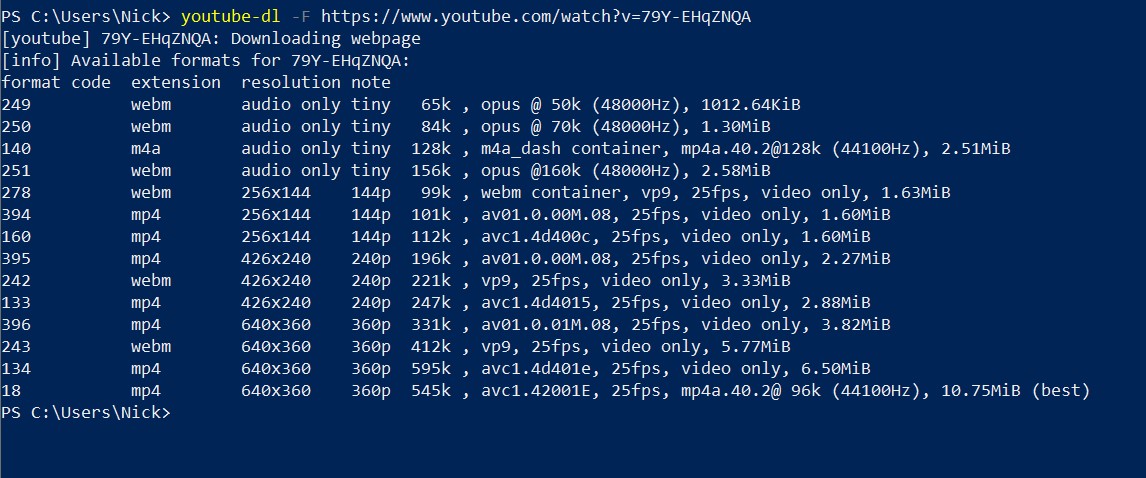
It shows that at that place are 14 different files fifty-fifty with a maximum resolution of 360p.
The columns are in guild:
- Format code – a number that you can target if you want to download that file
- File extension – represents the container ( the packaging around the codec ) which we won't worry much nearly here
- Video Resolution (written as both 640×360 and 360p which are the aforementioned thing)
- Bitrate
- Codec, frame rate, file size, etc.
You can find HDR YouTube clips with over 40 different files associated with the video like this one which gives this output:
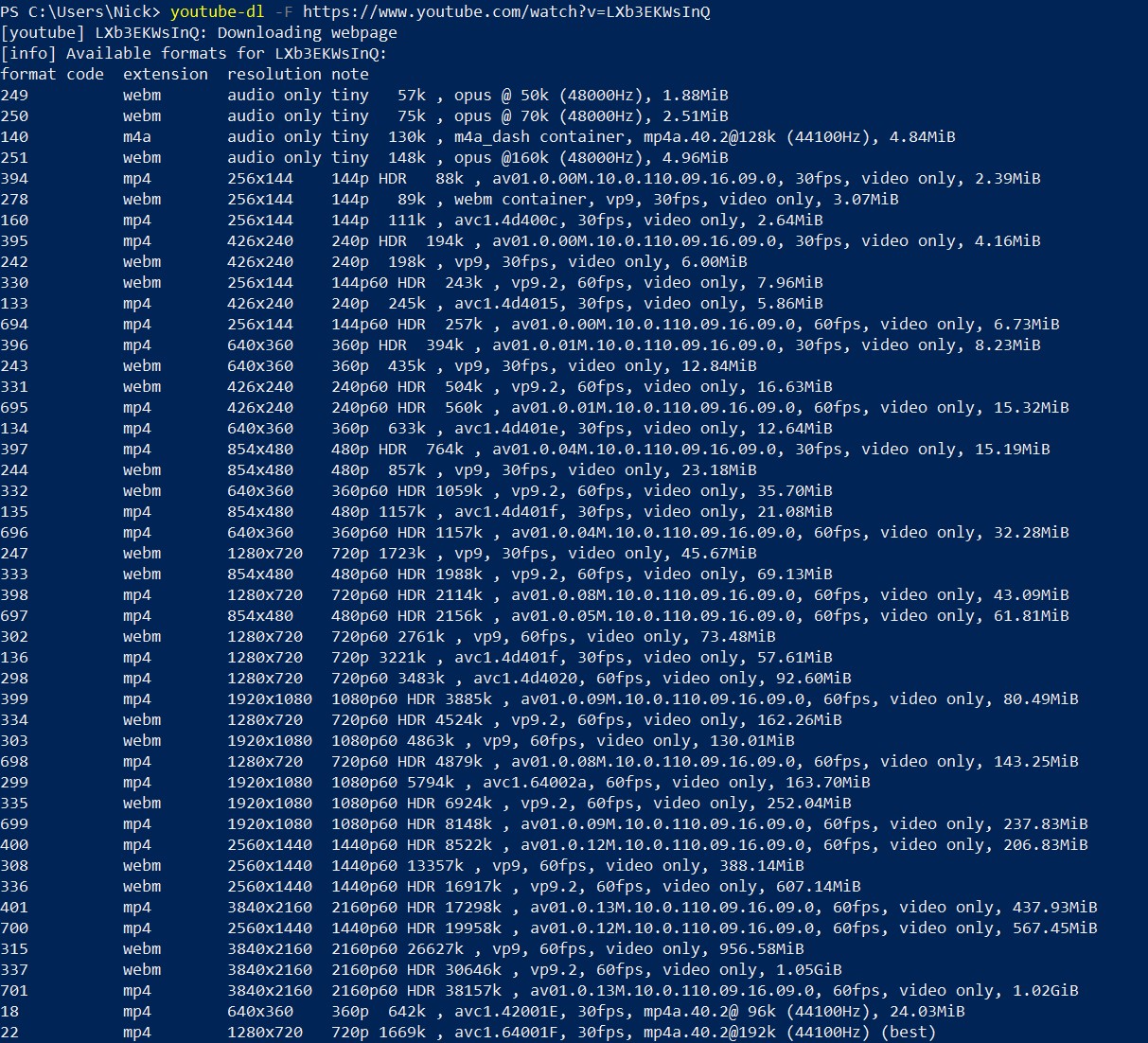
This might seem overly complicated, but in that location are a few primal conclusions we can draw which volition help united states.
You tin can see that YouTube encodes using three different video codecs:
- H.264 a.thousand.a AVC
- VP9 , which is pretty like to H.265 a.k.a HEVC , but avoids the licensing. It takes longer to encode, but the file size is smaller (see this frame.io blog for more info)
- AV1 , which is VP's successor.
Each is a new generation of codec which tin get the aforementioned quality at a smaller file size, which is groovy for YouTube. The trade-off is that they in plough have longer to encode and this is why your YouTube upload initially might but bear witness in SD and so Hard disk drive and can take a long time to show in 4K (sometimes it's the adjacent day). They also require more powerful hardware to decode – which is why y'all oft encounter editors complaining about the H.265 files they've been sent – but in this case, it means your device will decide what you see. You have some command in your YouTube playback settings but I doubt many people are irresolute those, plus YouTube is going to make certain y'all tin can watch the video earlier any quality concerns. The takeaway is that the quality the viewer sees is variable and depends on both their net connection and their hardware.
A question that comes upwardly a lot is this:
Should ane upload to Youtube in 4K?
Seems like a no-brainer if your file is 4K, but what if y'all simply have an Hard disk video?
Testing
I ran some tests to run into how YouTube would handle both a 1080p file and an upscaled 4K UHD file of the same clip.
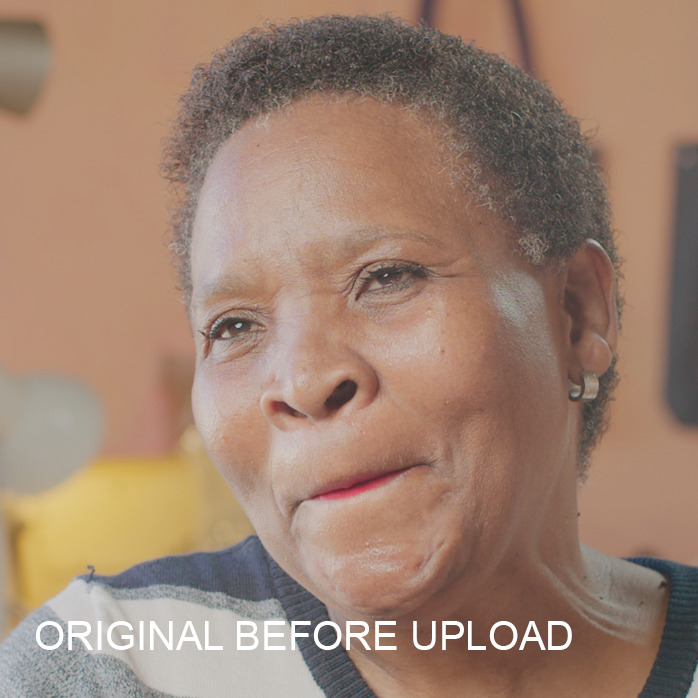
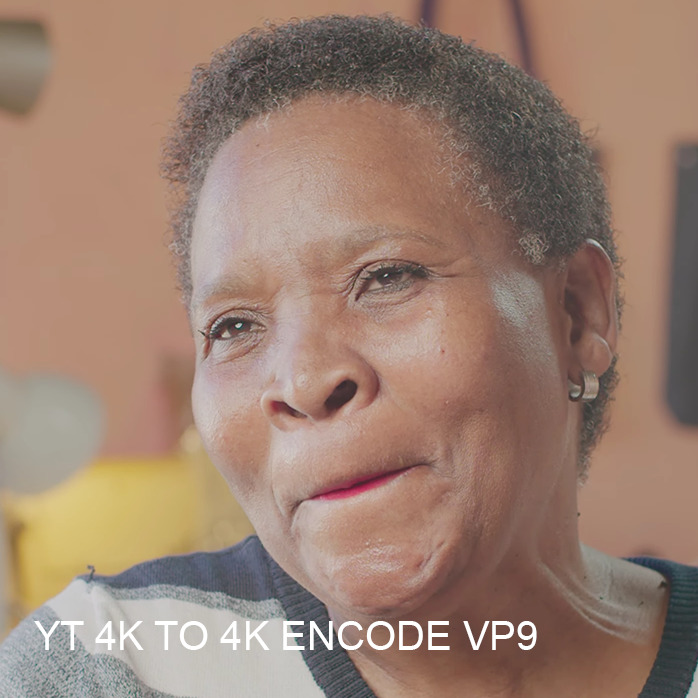
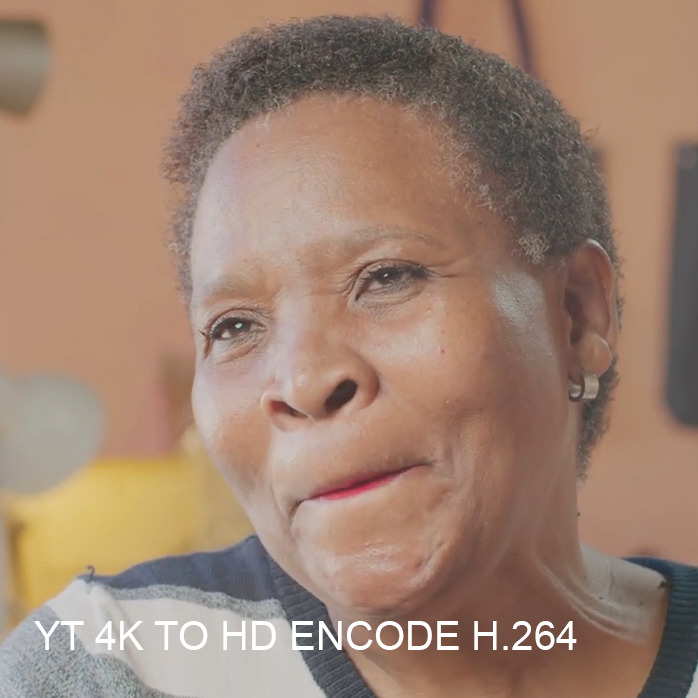
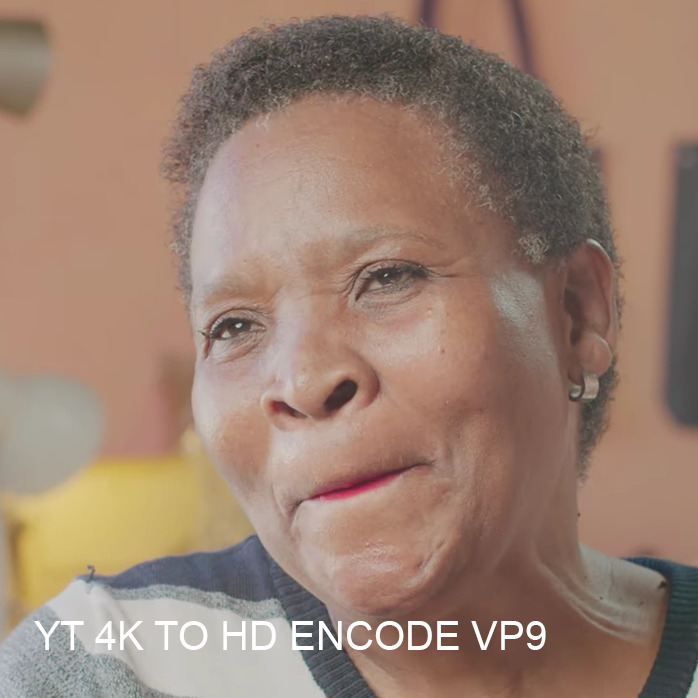
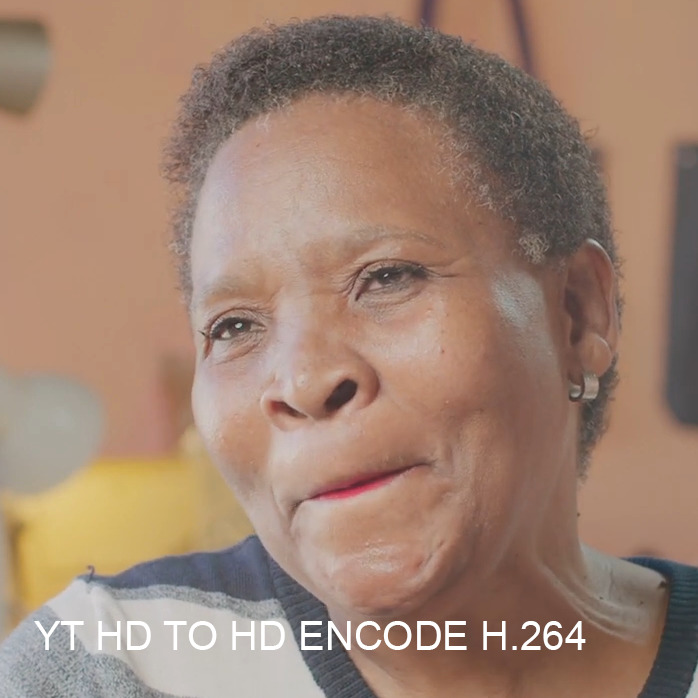

I establish:
- For the H.264, the difference was minimal
- For the VP9, the file created from the 4K upload was much better
- The VP9 files had a slightly amend sharpness but had a colour shift (this is an ungraded prune and information technology may be that the colours are out of gamut)
This is just a snapshot examination and then I would encourage y'all to test your ain footage (testing a 10-second reference export saves time).
YouTube favours 4K
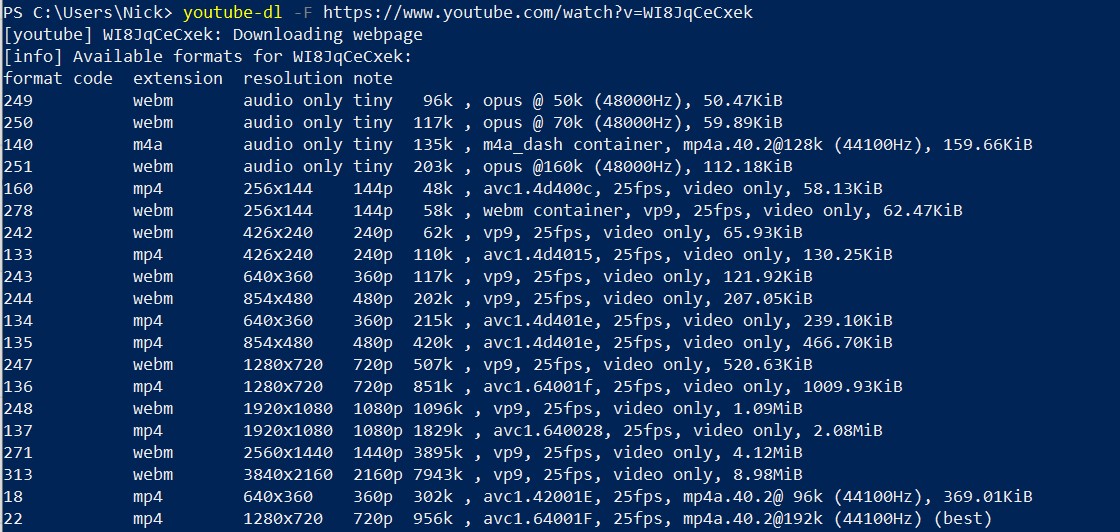
The youtube-dl info shows that the 4K UHD VP9 file was 8Mbps compared to the 1080p file being i Mbps. Granted a 4K UHD video is like 4 HD videos stacked together, but and so you'd simply expect four times the bitrate, whereas it's viii times higher. YouTube clearly favours 4K (only equally I said to a higher place, you have to be pretty patient before this actually shows up).
My conclusion is that in that location are major advantages to uploading 4K video to YouTube. Even if yous are working in HD, you might find information technology's worth your time to upscale it earlier uploading, especially if done at loftier quality (see our recent upscale shootout link: A.I. Upscaling Software Shootout). There is too a measure of time to come proofing to this – YouTube's 4K encodes are currently better quality and more and more people will lookout information technology in 4K moving forward.
The caveat to this is that doing the upscaling might hateful introducing digital-looking artifacts or over-sharpening and this might offset whatsoever gains you might have. Either way, those of you who gaze at your grade 1 monitor for a living may be better not to see it on YouTube at all.
salvatoreannever87.blogspot.com
Source: https://www.provideocoalition.com/uploading-to-youtube-is-4k-worth-it/
0 Response to "Should I Encode Videos Before Youtube Uploade?"
Post a Comment